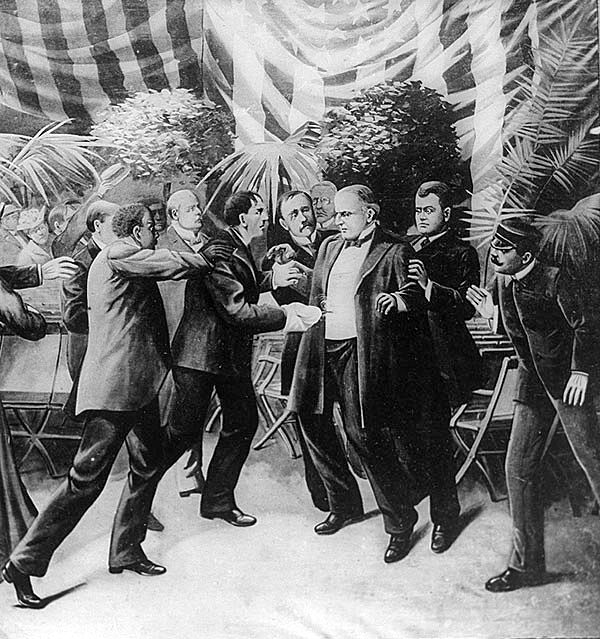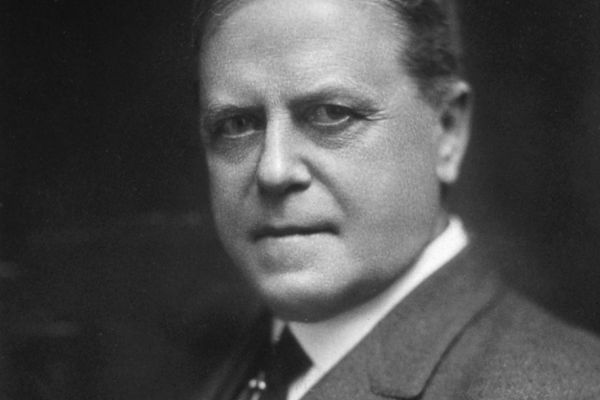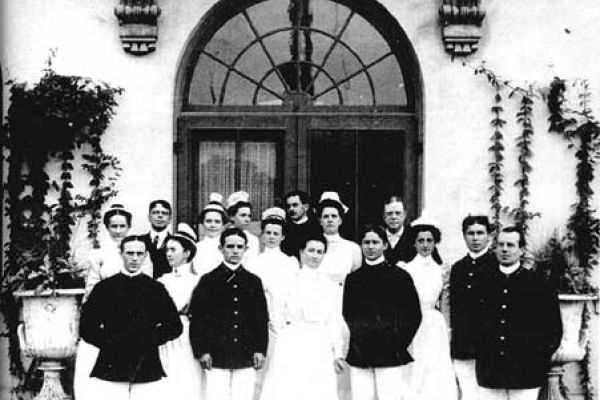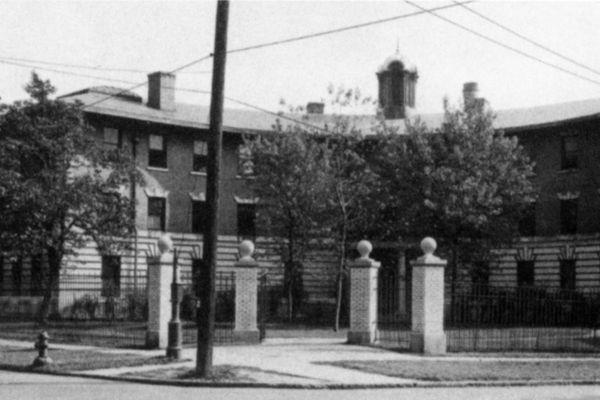Roswell Park and the Assassination of President McKinley
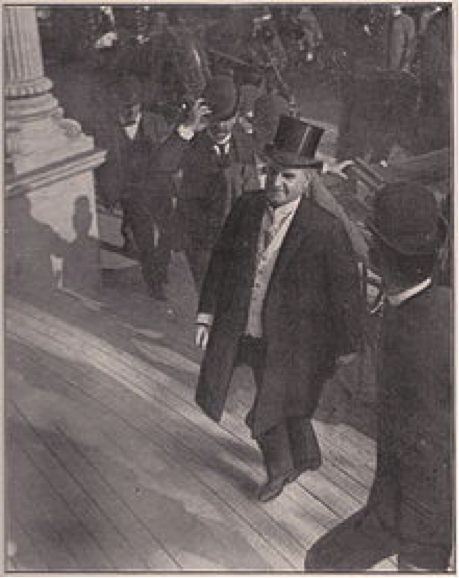
The Pan-American Exposition opened in Buffalo in May of 1901 amid high spirits and a festive atmosphere. But events took a dark turn four months later when an assassin shot the fair’s most famous visitor — President William McKinley. People have wondered ever since whether the outcome might have been different if Dr. Roswell Park, a renowned and highly skilled surgeon, had performed the emergency surgery on McKinley. Here’s why he didn’t.
Friday, Sept. 6, 1901
4:07 p.m. – As President McKinley received visitors in the Exposition’s Temple of Music, 28-year-old anarchist Leon Czolgosz stepped up as if to shake hands. But Czolgosz swiftly pulled a .32-caliber handgun from beneath a handkerchief and shot the president twice. One bullet glanced off a button and grazed McKinley’s chest. The second entered the president’s abdomen.
Czolgosz was tackled by James B. Parker, an African-American man who had been standing behind him in line, and members of the security staff quickly subdued the gunman. McKinley was bundled into the Exposition’s electric ambulance and transported to the Pan Am Emergency Hospital on the fairgrounds for treatment.
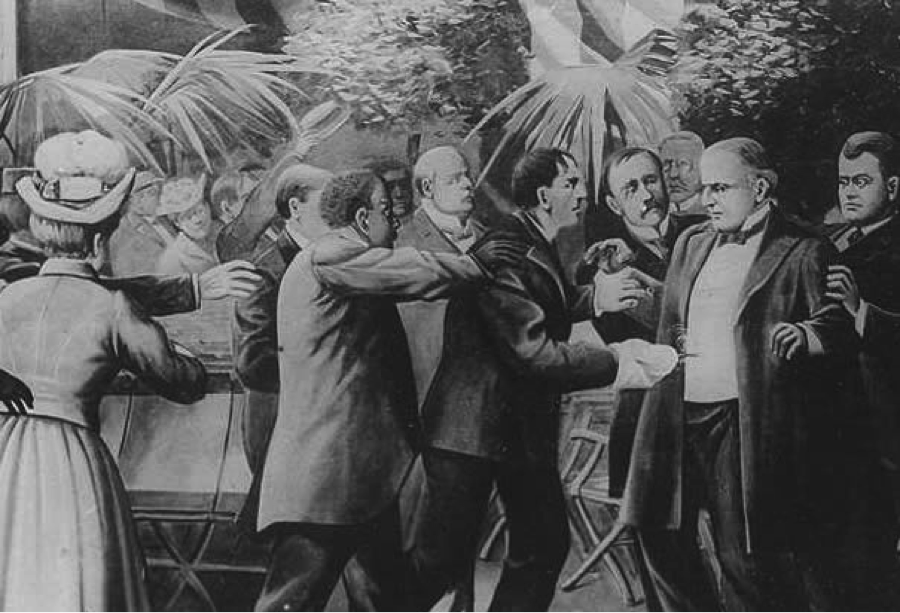
Dr. Roswell Park — who had extensive experience in treating trauma and abdominal wounds, and who would have been the clear choice to perform surgery on the president — was not at the fair the day of the shooting. As fate would have it, he was in Niagara Falls performing neck surgery on a lymphoma patient.
In later years, one of the surgeons assisting Park recalled that a messenger ran into the operating room to announce that Dr. Park was wanted urgently in Buffalo.
“Don’t you see that I can’t leave this case, even if it were for the president of the United States?” Park replied.
“Doctor, it is for the president of the United States.”
“Everything in confusion”
By his own account, Dr. Park asked a fellow surgeon to hurry ahead to the railroad station to “make the necessary arrangements for a special engine or train” to speed him to Buffalo. But when Park arrived at the station, he found “everything in confusion…” He had to wait 15 or 20 minutes until a regularly scheduled train came through.
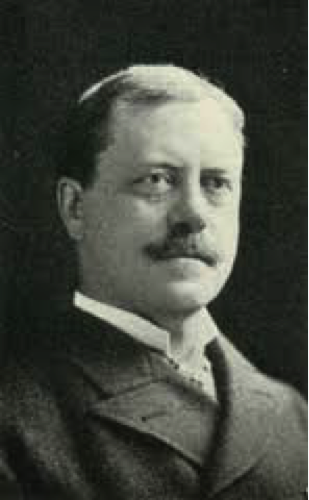
Meanwhile, the first physicians to reach McKinley decided they could not wait for Dr. Park’s arrival. Among other pressures, they were in a race against fading daylight, for the sun was the only source of light in the operating room, and it was going down fast. By the time Park entered the Pan Am Emergency Hospital at 6:50 p.m., the surgery was almost over.
Matthew D. Mann, M.D., a gynecologist with no surgical experience involving the upper abdomen, had performed the operation. His work was complicated by the fact that the president was a heavy man with a very large abdomen, and consequently Dr. Mann was unable to locate the bullet. When Park walked into the operating room, he noticed that neither Mann nor any of the other surgeons wore surgical gloves, caps, or gowns, nor had they taken steps to disinfect the surgical area.
Perspiration from one of the attending surgeons dropped into the president’s open wound. The wound was closed without a drain in place.
With the surgery complete at 7:32 p.m., the president was transferred by electric ambulance to the home of John Milburn, chair of the Pan Am Board of Directors, to recover. Dr. Park and another physician rode in the ambulance with the president.
Saturday, Sept. 14, 1901
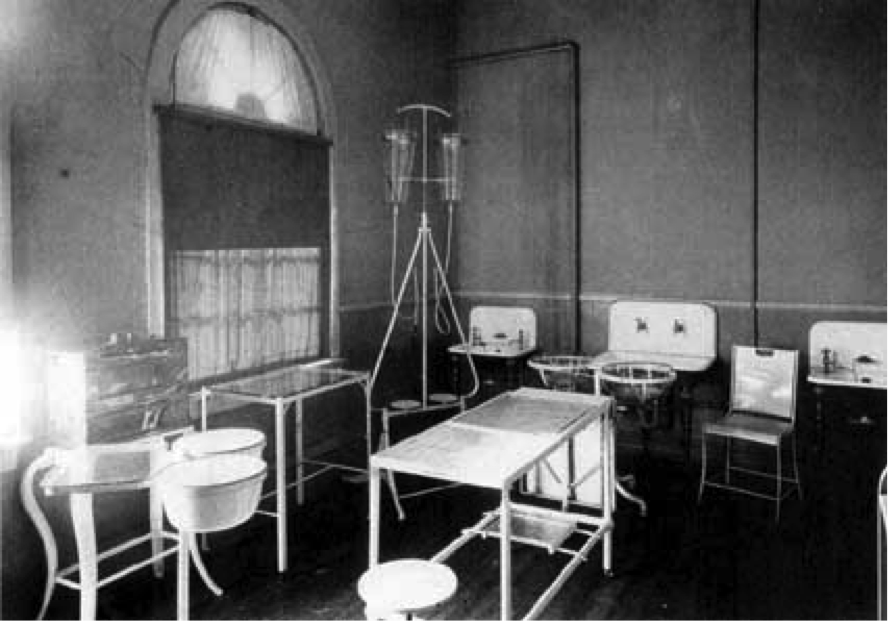
In the week that followed, President McKinley’s condition alternately improved and then deteriorated, with Dr. Park providing updates to reporters. The president died at the Milburn residence Sept. 14, 1901. The autopsy was conducted by Harvey Gaylord, M.D., pathologist of the New York State Pathological Laboratory (later to become Roswell Park Comprehensive Cancer Center), with Dr. Park as a witness. Gangrene was cited as the cause of death.
After Dr. Park’s death in 1914, Buffalo physician Charles G. Stockton, M.D., wrote that Park’s inability save the president was an “almost overwhelming disappointment, one from which he suffered keenly while life remained to him.”
Several weeks after McKinley’s death, Dr. Park performed surgery at Buffalo General Hospital on a woman who had attempted suicide by shooting herself in the abdomen, a strategy that resulted in the same type of gunshot wound suffered by the president.
The woman lived.
Along with all but one of the Pan Am Exposition buildings, the Temple of Music was demolished after the fair closed; today only a plaque on a stone marks the location where McKinley was assassinated, in the median of Fordham Ave. between Elmwood Ave. and Lincoln Pkwy. in Buffalo. The Milburn home where President McKinley died was razed in 1957, and the site is now a parking lot at Canisius High School.
To learn more:
- Watch Thomas Edison’s film of the crowds outside the Temple of Music after word spread that the president had been shot.
- Watch Edison’s film of the president’s funeral cortège in Buffalo.
We Set the Model
50 years as an NCI-designated comprehensive cancer center and more than a century leading the way. Learn more about Roswell Park's place in history as we became a model for other cancer centers around the world.
